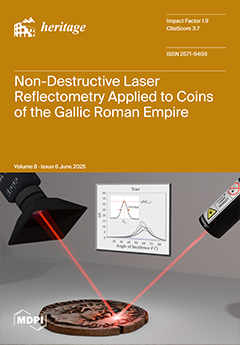This article carries out an interdisciplinary analysis of five MOOC courses developed by the University of Valladolid and offered on higher education platforms between 2020 and 2024. This research is based on the study of the lexical categories used by the informants participating in these courses, establishing a correlation with the theoretical and practical debates surrounding the definition of heritage and the frameworks of contemporary heritage education. Through a metalinguistic approach, the semantic limits of the emerging lexical categories are examined, paying attention to their ambiguity, polysemy and contexts of use, both from a formal linguistic perspective and from a hermeneutic approach. The analysis is based on natural language processing tools, complemented by qualitative techniques from applied linguistics and cultural studies. This dual approach, both scientific–statistical and humanistically nuanced, allows us to identify recurrent discursive patterns, as well as significant variations in the conceptualization of heritage according to the socio-cultural and geographical profiles of the participants. The results of the linguistic analysis are contrasted with the thematic lines investigated by our research group, focusing on cultural policy, legacy policies, narratives linked to the culture of depopulation, disputed scientific paradigms, and specific lexical categories in the Latin American context. In this sense, the article takes a critical look at discursive production in massive online learning environments, positioning language as a key indicator of the processes of cultural resignification and the construction of legacy knowledge in the Ibero-American context. The findings of my scientific article underscore the pressing need for a multiform liberation of the traditionally constrained concept of heritage, which has long been framed within rigid institutional, legal, and disciplinary boundaries. This normative framework, often centered on materiality, monumentalism, and expert-driven narratives, limits the full potential of heritage as a relational and socially embedded construct. My research reveals that diverse social agents—ranging from educators and local communities to cultural mediators and digital users—demand a more flexible, inclusive, and participatory understanding of heritage. This shift calls for redefining legacy not as a static legacy to be preserved but as a dynamic bond, deeply rooted in affective, symbolic, and intersubjective dimensions. The concept of “heritage as bond”, as developed in contemporary critical theory, provides a robust framework for this reconceptualization. Furthermore, the article highlights the need for a new vehiculation of access—one that expands heritage experience and appropriation beyond elite circles and institutionalized contexts into broader social ecosystems such as education, digital platforms, civil society, and everyday life. This approach promotes legacy democratization, fostering horizontal engagement and collective meaning-making. Ultimately, the findings advocate for a paradigm shift toward an open, polyphonic, and affective heritage model, capable of responding to contemporary socio-cultural complexities.
Full article





